Guest Post by Nina Edmondson
I’m a foreigner living in rural Bali, where birds are often kept in very small cages as decoration – it’s part of the culture, considered normal and nothing I can change on a grand scale – no rescue centers exist here either.
While doing some gardening one day, I went over to find a knife in the handyman’s area of the garden and discovered he was keeping a dove in this tiny cage. It was obviously a wild adult which had been caught by him.
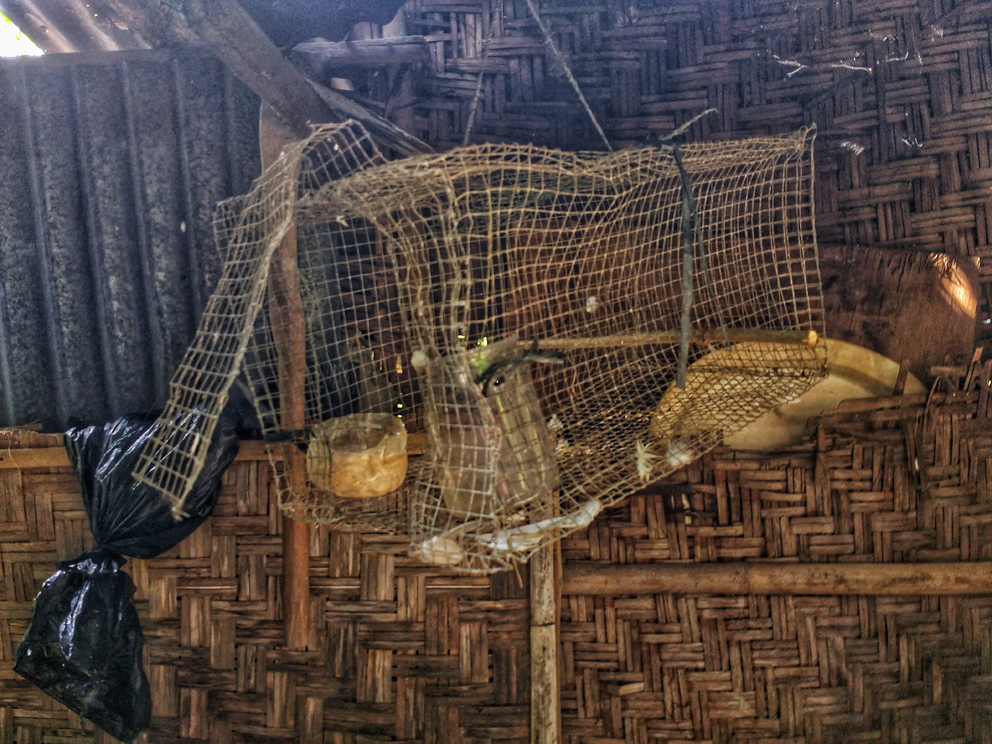
Cage of Doom
Without thinking too much, I opened the door and let it out, watching as it fluttered happily to pastures new – or so I’d thought.
On his return from work, the handyman was upset, and wandered around the garden in the dark with a flash-light searching for his bird.
“What have I done!” I thought, wracked by pangs of guilt.
The next day it returned. He caught it, happily placing it back inside the ‘Cage of Doom’.
Wanting to find a compromise, I decided to butt in again, this time educating myself on dove preferences and buy materials. (Thanks Elizabeth for the great cage building tips!)
This is the product of our labour.
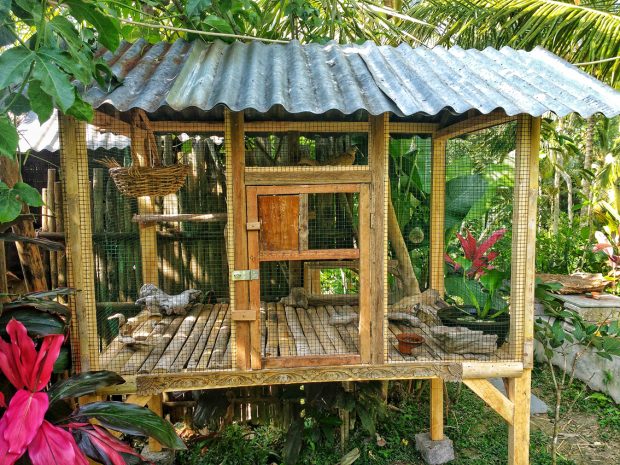
Full Frontal Dove Mansion
It now has a piece of wire closing the main door latch. I managed to persuade him to include a little ‘dove door’ so it could fly around outside and come back.
The dove seems happy, the handyman is proud of his work and my conscience a little lighter – regarding the bird and its owner!
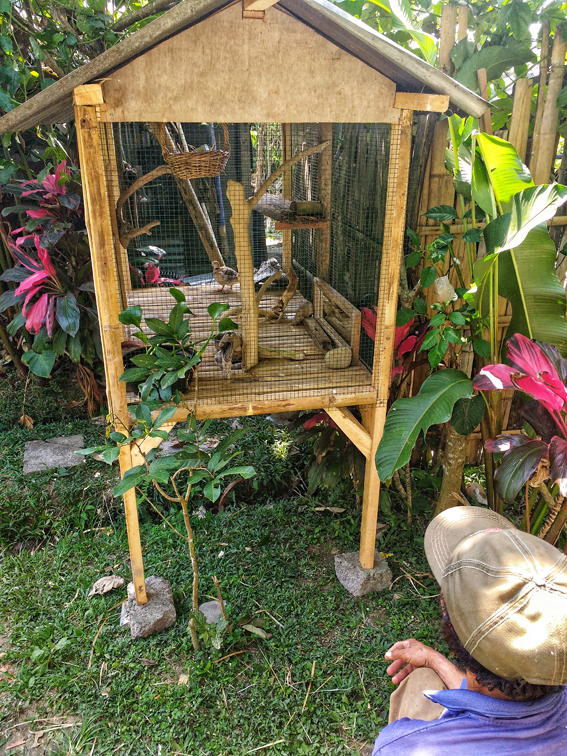
Dimensions: Length 150cm x Width 90cm x Height under roof tip 100cm.
The floor is split bamboo so the dove doesn’t have to stand on bare wire (apparently not good for its feet). The roof is corrugated metal – but under vegetation so it won’t be too hot in the tropical sun.
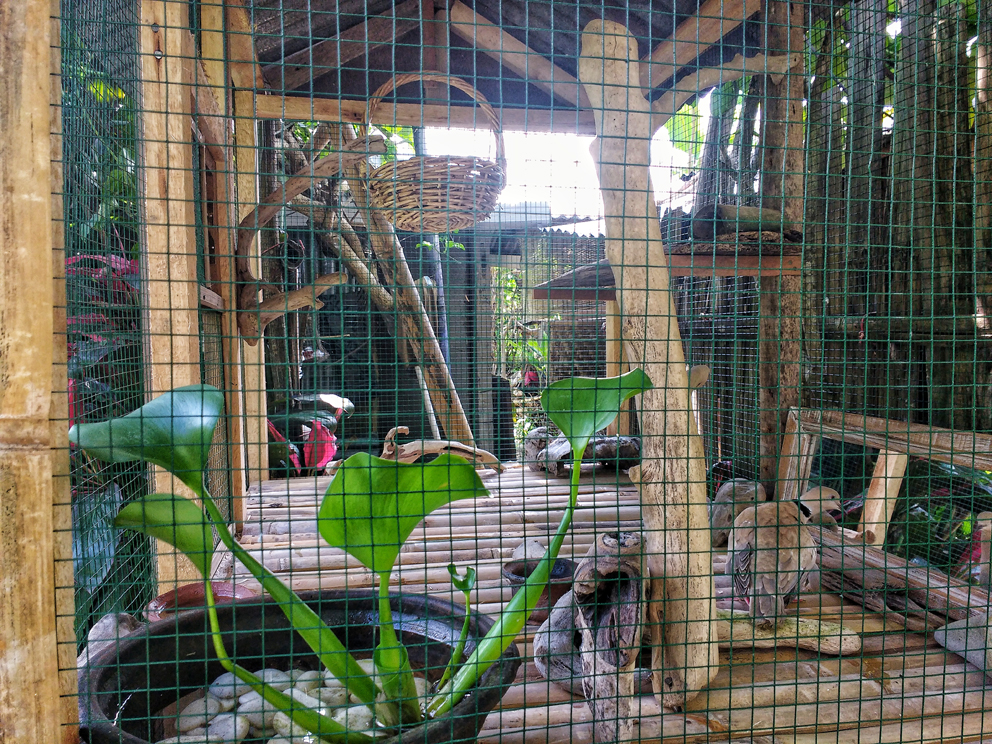
All modern conveniences
It has a nest, a bathtub with pondweed, a mirror, a shelf, food/water in ceramic pots, and a few perches made from driftwood I found on the beach. It’s fed on unhusked rice and leafy veg from the garden.
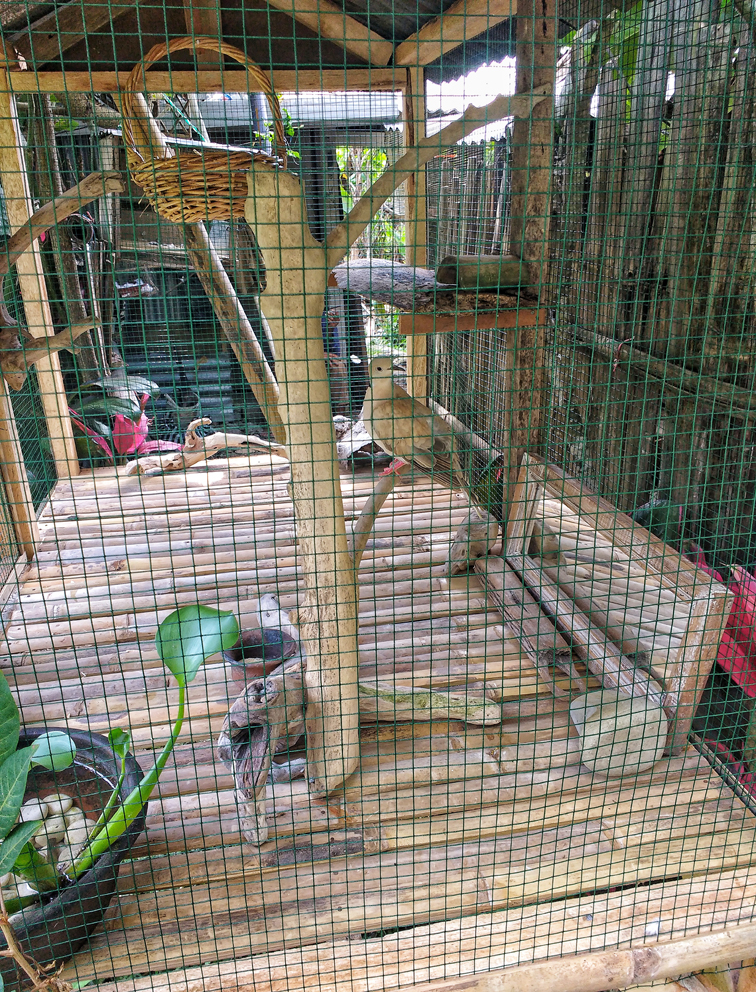
We’ ve learned that he’s a male Sundra Collared dove. The males make very different sounds to the females. I called him Bulu – which means feather in Indonesian – though the handyman thinks I’m a bit nuts – no animals are given names here!
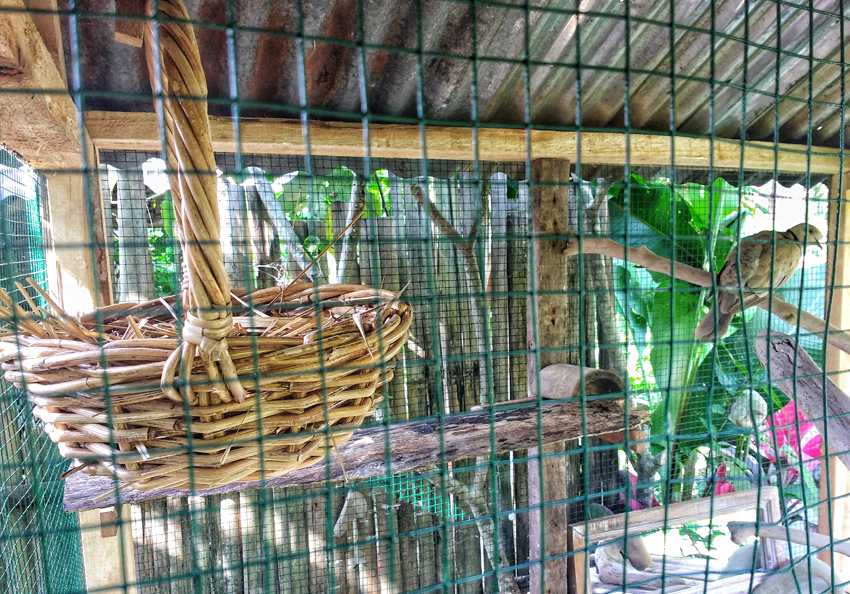
I wonder if he’ll use the nest . . .
10/19/18 UPDATE! Dove Love!
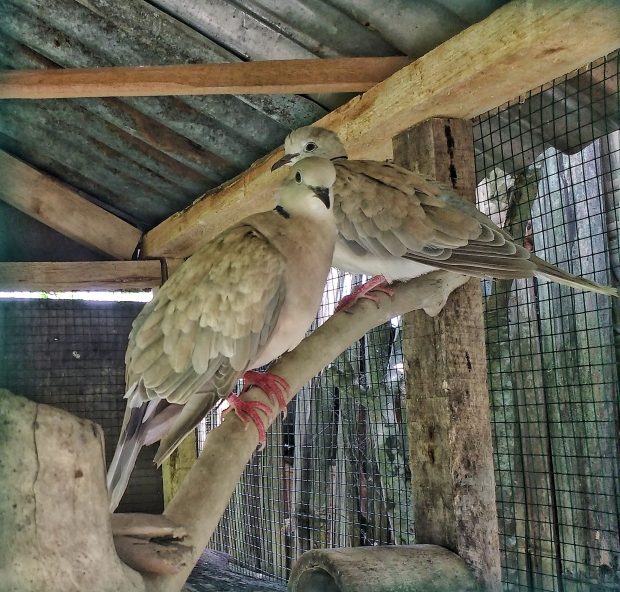
Bulu & Bunga
Elizabeth was right when she said he’d probably attract a mate now that he has a nice home to offer. It happened sooner than I imagined.
Turns out my English neighbour loves pigeons and doves, so she chose a name. Meet Bunga, which means ‘Flower’ in Indonesian. She’s the one in the foreground.
They’ve been rearranging the nest, kissing and constantly calling to each other. Dove love!

Nina enjoys living and working from a garden in rural Bali. She’s a nature lover, artist and self-development coach.
Books by Nina
For adults: 50 Things To Know For Your Mindfulness & Meditation Journey
For kids: What’s Your Favourite Thing?

